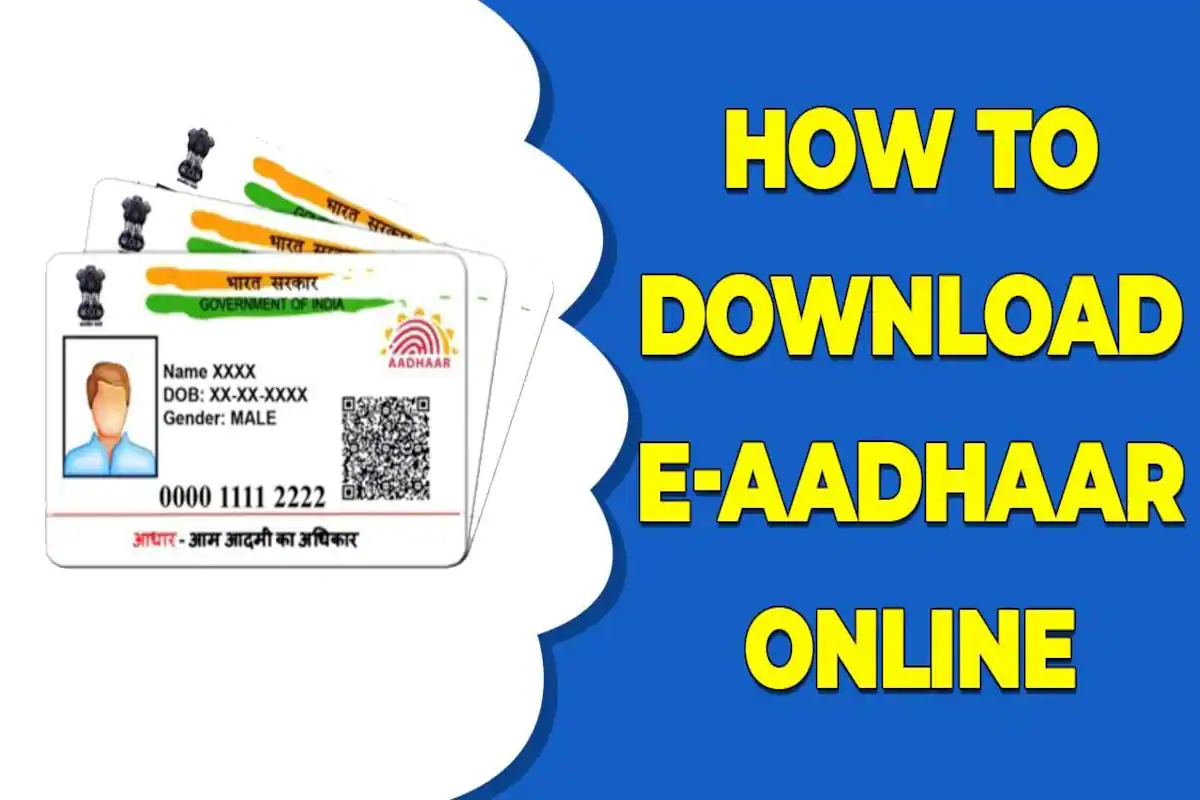What Are the Benefits of NPCI Linking for Seamless Transactions?

Strong 8k brings an ultra-HD IPTV experience to your living room and your pocket.
The financial landscape in India has undergone a revolutionary transformation in recent years, propelled by the relentless pursuit of digital inclusion and technological advancements. One of the paramount initiatives driving this transformation is the linking of the Aadhaar card with the National Payments Corporation of India (NPCI). By integrating these two powerful systems, the Indian financial ecosystem has unlocked numerous benefits, facilitating seamless transactions and fostering an era of financial inclusivity. This article delves into the myriad advantages of NPCI linking for seamless transactions, particularly focusing on the integration of the Aadhaar card.
Understanding NPCI and Aadhaar
Before exploring the benefits, it is essential to grasp the core concepts of NPCI and Aadhaar. The National Payments Corporation of India (NPCI) is an umbrella organization that oversees India’s retail payments and settlement systems. Established in 2008, NPCI's primary objective is to facilitate secure and efficient payment and settlement infrastructure across the country. Aadhaar, on the other hand, is a unique 12-digit identification number issued to Indian residents based on their biometric and demographic data. Managed by the Unique Identification Authority of India (UIDAI), Aadhaar aims to provide a unique identity to each individual, enhancing the provision of public services and subsidies.
Seamless and Instant Transactions
One of the most profound benefits of NPCI link Aadhaar card is the facilitation of seamless and instant transactions. This system allows individuals to conduct financial transactions without the need for multiple intermediaries, resulting in reduced transaction times and enhanced efficiency.
For instance, the Aadhaar Enabled Payment System (AEPS), managed by NPCI, permits transactions using the Aadhaar authentication at any point of sale (POS). This means individuals can conduct banking transactions such as cash withdrawals, deposits, and balance inquiries using their Aadhaar number and biometric verification. The process is not only swift but also eliminates the need for physical documentation, contributing to a seamless user experience.
Financial Inclusion for the Unbanked
India, like many other countries, has a sizable population that remains unbanked or underbanked. The traditional banking system's requirements often exclude these individuals from accessing formal banking services. However, linking the Aadhaar card with NPCI changes this narrative by promoting financial inclusion.
Through NPCI linking, individuals can open bank accounts using their Aadhaar number as a KYC (Know Your Customer) document. This simplifies the account opening process, making it more accessible for those who may not have other forms of identification. As a result, millions of unbanked individuals can now participate in the formal financial system, paving the way for economic empowerment and improved livelihoods.
Enhanced Security and Fraud Prevention
Security is a critical aspect of any financial system. The integration of NPCI with Aadhaar significantly enhances security and mitigates fraud risks. Aadhaar-based transactions leverage biometric authentication, which is a robust security measure compared to traditional PIN or password-based methods. Biometric authentication ensures that transactions are conducted by the rightful account holders, reducing the chances of fraud and unauthorized access.
Additionally, the use of Aadhaar for e-signature and e-KYC processes bolsters the verification and authorization mechanisms. These digital processes not only streamline transactions but also provide an added layer of security, enhancing user trust and confidence in the system.
Convenience and Accessibility
NPCI linking with Aadhaar brings unparalleled convenience and accessibility to financial transactions. Instead of juggling multiple documents and identification proofs, individuals can rely on their Aadhaar number for various transactions and services. This includes tasks such as e-Aadhaar card download, where the digital copy of the Aadhaar card can be accessed and used for verification purposes. The simplification of processes through a single identification number makes banking and financial services more user-friendly and efficient.
Moreover, the accessibility extends to rural and remote areas where traditional banking infrastructure may be limited. The AEPS and other Aadhaar-enabled services can be availed at micro-ATMs or business correspondent outlets, ensuring that even those in far-flung regions have access to banking services. This geographic reach is instrumental in achieving financial inclusion and bridging the urban-rural divide.
Direct Benefit Transfers
One of the standout benefits of NPCI linking with Aadhaar is the facilitation of Direct Benefit Transfers (DBT). The DBT system enables the direct transfer of subsidies and benefits from the government to the beneficiaries' bank accounts, eliminating intermediaries and reducing leakages. By linking Aadhaar with NPCI, the government ensures that benefits reach the intended recipients promptly and accurately.
This system has been particularly impactful for various welfare schemes, including subsidy transfers for LPG, pensions, scholarships, and more. Beneficiaries receive funds directly into their bank accounts linked with Aadhaar, ensuring transparency and efficiency. The success of DBT underscores the potential of NPCI and Aadhaar integration in revolutionizing public service delivery.
Interoperability Across Platforms
The seamless integration of NPCI with Aadhaar fosters interoperability across different financial platforms. Interoperability refers to the ability of diverse systems and organizations to work together seamlessly. In the context of financial transactions, this means that individuals can use their Aadhaar-linked bank accounts to transact across various platforms and service providers.
For example, Unified Payments Interface (UPI), another breakthrough initiative by NPCI, allows users to link multiple bank accounts to a single mobile application. By integrating Aadhaar with UPI, individuals can facilitate transactions across different banks and service providers seamlessly. This interoperability streamlines the transaction process and provides users with the flexibility to choose their preferred financial platforms.
E-Aadhaar Card Download and Digital Documentation
The digital age demands swift and easy access to documentation, and the NPCI-Aadhaar linkage addresses this need through the provision of digital documentation. E Aadhaar card download is a significant advantage of this integration. Individuals can readily download their e-Aadhaar card from the UIDAI website, ensuring that they have access to their identification proof whenever needed.
Digital documentation extends beyond just Aadhaar cards. Individuals can store and share their documents digitally, reducing reliance on physical copies and enabling smoother verification processes. This convenience is crucial in various scenarios, such as applying for loans, accessing government services, and conducting financial transactions.
Cost Efficiency for Financial Institutions
Financial institutions also benefit from the NPCI-Aadhaar linkage in terms of cost efficiency. The traditional KYC processes are often cumbersome, time-consuming, and costly. By leveraging Aadhaar-based e-KYC, financial institutions can streamline and expedite the verification process, reducing operational costs and enhancing customer onboarding experiences.
Moreover, the automation of verification and authentication processes minimizes the need for manual intervention, further cutting down costs for banks and financial institutions. This cost efficiency can translate into better services and lower fees for customers, making financial products more affordable and accessible.
Empowering Digital Payments and Cashless Transactions
In a world rapidly moving towards digitalization, the NPCI-Aadhaar linkage plays a pivotal role in empowering digital payments and promoting cashless transactions. Digital payment systems such as Bharat QR, UPI, and AEPS rely on the robust infrastructure provided by NPCI and the unique identification of Aadhaar. These systems enable users to make payments digitally, reducing dependency on cash and fostering a more secure and traceable financial ecosystem.
Retailers, businesses, and service providers increasingly prefer digital payments due to their efficiency and affordability. By linking Aadhaar with NPCI, individuals can seamlessly participate in digital commerce, contributing to the growth of the digital economy and ensuring that India stays on the path to becoming a cashless society.
Encouraging Financial Responsibility
The integration of NPCI with Aadhaar encourages financial responsibility and literacy among individuals. With easier access to banking services, more people are likely to open bank accounts, save money, and manage their finances effectively.
Furthermore, the transparency brought about by Aadhaar-linked transactions ensures that individuals can track their financial activities, fostering a culture of accountability. As more individuals engage with the formal banking sector, they become more informed about financial products and services, enabling them to make educated financial decisions.
Reducing Bureaucratic Bottlenecks
One of the perennial challenges in public service delivery is bureaucratic bottlenecks that hinder efficient service provision. By linking NPCI with Aadhaar, these bottlenecks are significantly reduced. The streamlined processes ensure that individuals can access services without unnecessary delays and complications.
For instance, the e-Aadhaar card download process is straightforward, allowing users to retrieve their digital Aadhaar card without having to navigate complex bureaucracy. This reduction in bureaucratic delays is particularly beneficial for accessing government subsidies, welfare schemes, and other public services, making them more efficient and user-centric.
Supporting Innovation and Technological Growth
The integration of NPCI with Aadhaar not only provides immediate benefits but also lays the foundation for future innovations and technological growth. The robust infrastructure established through this linkage supports the development and deployment of innovative financial solutions, driving the evolution of the fintech sector.
Emerging technologies such as blockchain, artificial intelligence, and machine learning can be seamlessly integrated into the existing system, enhancing its capabilities and functionality. This innovation potential is instrumental in ensuring that India's financial ecosystem remains dynamic and adaptive to evolving technological trends.
Conclusion
The benefits of NPCI linking with the Aadhaar card are multifaceted and far-reaching, impacting various aspects of India's financial ecosystem. From promoting financial inclusion and empowering digital payments to enhancing security and reducing bureaucratic delays, the integration of these two powerful systems drives seamless transactions and fosters a more inclusive and efficient financial environment. The ability to download e-Aadhaar cards and access digital documentation further exemplifies the convenience and accessibility brought about by this linkage. As India continues its journey towards digitalization and financial empowerment, NPCI and Aadhaar's integration will remain a cornerstone of progress, ensuring that no one is left behind in the era of seamless and inclusive transactions.
Note: IndiBlogHub features both user-submitted and editorial content. We do not verify third-party contributions. Read our Disclaimer and Privacy Policyfor details.


